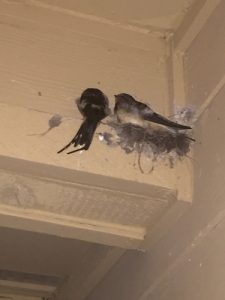
3/23/17
I couldn’t determine the exact type of rose I found on this bush. I found this rose bush right beside the Lourdes grotto on campus. Roses are often associated with the Virgin Mary, an ode to her appearance to Juan Diego in Guadalupe, Mexico. I think documenting this picture is a casual way that science and religion interact with one another on a daily basis. I’m 99% sure the reason these roses were planted is due to the grotto. Roses are frequently used in religious imagery, especially in Catholic religious imagery. Any Catholic ceremony that specifically honors Mary almost always incorporates roses. I’m not sure I’m aware of other rose bushes on campus. The grotto is something that many people walk by, but never really stop and see what’s there. Many students are unaware that it exists in the first place. Even more are unaware that it mirrors the Lourdes grotto at the University of Norte Dame, our better-known Holy Cross counterpart. These roses are gorgeous, but because they are a bit hidden, they are also one of St. Ed’s best-kept secrets.
iNaturalist: https://www.inaturalist.org/observations/5434170








